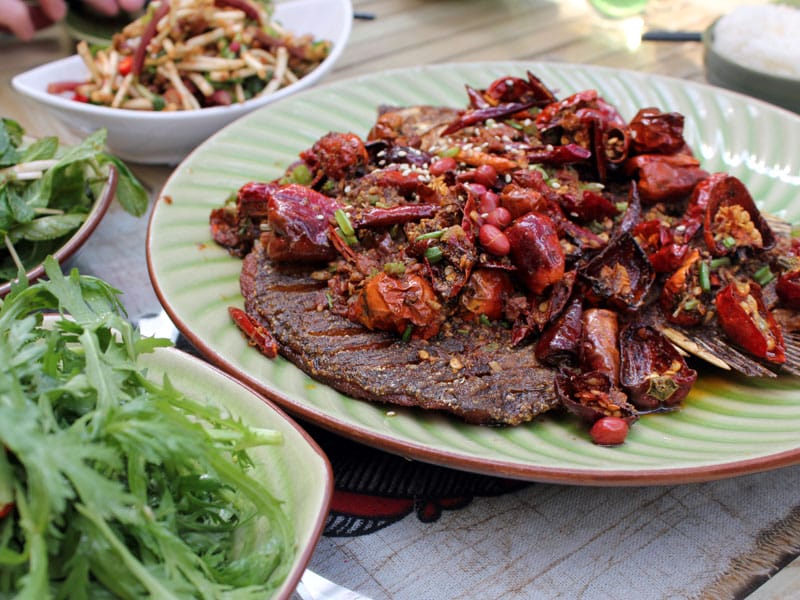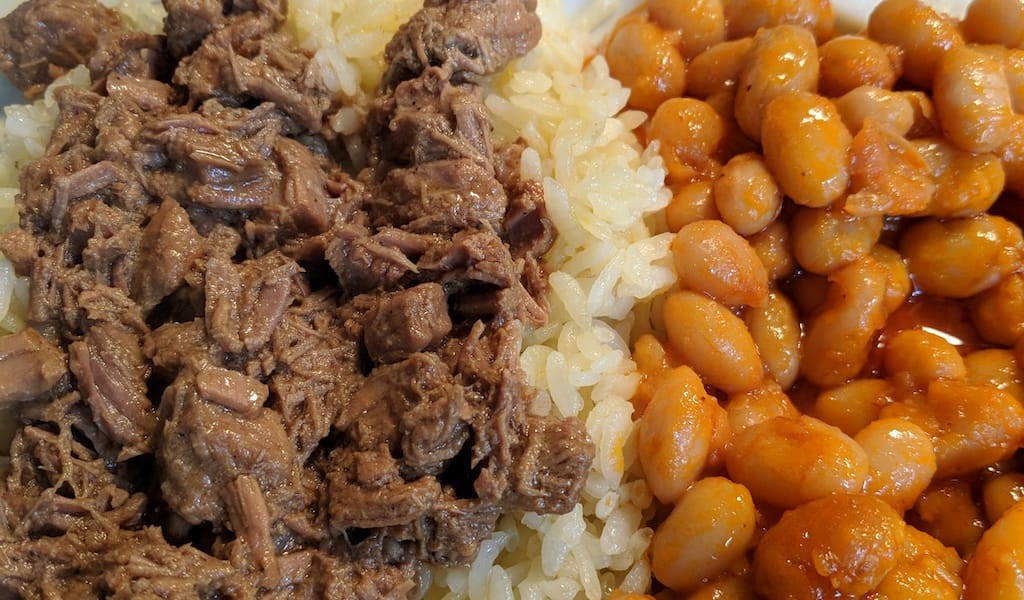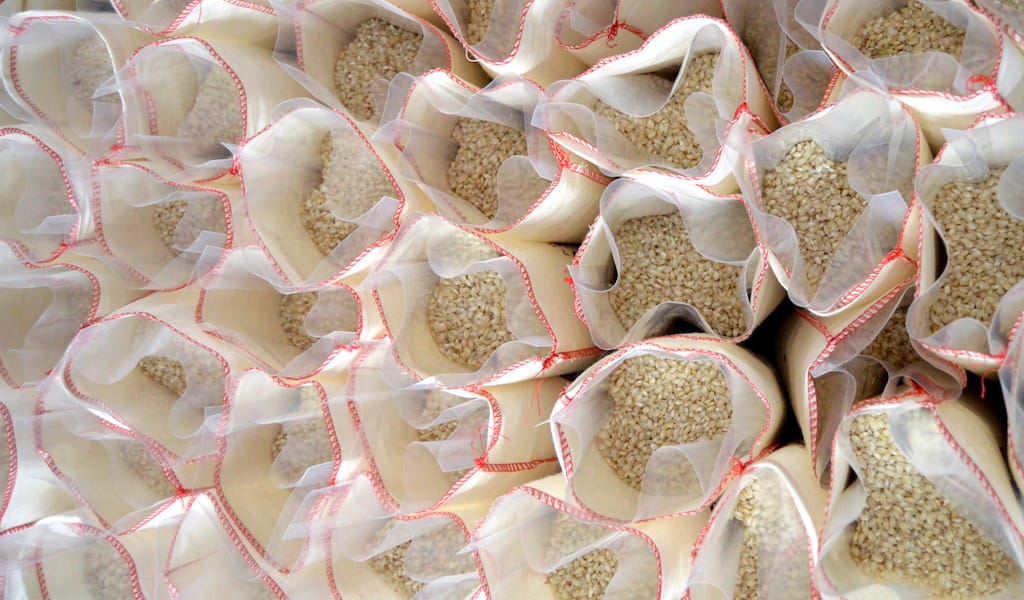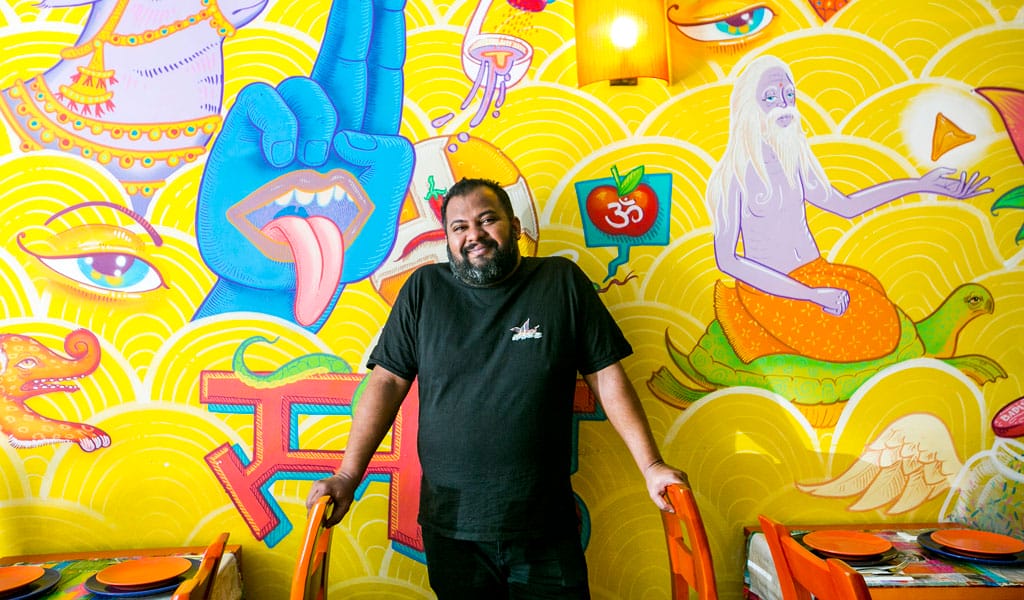Ever since former President Deng Xiaoping opened China’s economic doors to the rest of the world starting in 1979, foreigners wishing to do business in China have had to find a local partner to form a joint venture company. Though no longer a hard-and-fast requirement, that’s still the modus operandi at Lotus Eatery, where a founding partnership brings together the best of both culinary worlds: unusual yet authentic local flavors and distinctly foreign notions of consistent quality and attentive service.
When British co-owner James Todd and his local business partner Sophia Yang were looking to expand their ventures in new directions, they turned to the cuisine of Ms. Yang’s hometown: Kunming, the capital of Yunnan province. Yunnan cuisine generally keeps a low profile outside China, which is a shame because the cooking styles and ingredients of the province’s indigenous populations are remarkably different from most of the country’s other regional cuisines. Yunnan is home to 25 of China’s 55 officially recognized minority groups – more than any other province – and its people are as diverse as the ingredients they use. It’s not uncommon to find foraged mushrooms, edible flowers and deep-fried insects featured prominently at Yunnan establishments in Shanghai.
It is believed that insects have been eaten and used for medicinal purposes in China for more than 5,000 years; the custom is more common in rural areas with indigenous populations, where resources were often constrained, such as Yunnan. The Dai minority collects cicadas, bamboo worms and ants as snack foods, and insect cultivation is experiencing a revival in the area. In addition,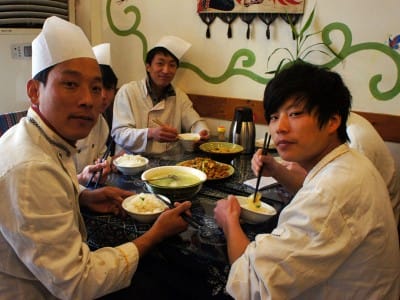 bee pupae, with its high protein and low fat content, is viewed as a nutritious food item. At Lotus Eatery, bee pupae is served deep-fried (炸蜂蛹, zhà fēng yǒng), and we recommend pushing your limits and trying this unique dish.
bee pupae, with its high protein and low fat content, is viewed as a nutritious food item. At Lotus Eatery, bee pupae is served deep-fried (炸蜂蛹, zhà fēng yǒng), and we recommend pushing your limits and trying this unique dish.
But while many meals at Lotus Eatery can be devoted to exploring the edible oddities of Yunnan province, there are plenty of delicious menu options that you can enjoy without squirming. We like to start with the pan-fried goat’s cheese (乳饼, rǔbǐng), a specialty of the Bai and Sani ethnic groups. Cheese is a rare commodity in Chinese cooking, but these groups have long learned to utilize every ingredient available to them in their isolated and often harsh mountainous areas. Dip the warm cheese into the salt, pepper and chili mix for a firm yet creamy start to the meal.
Like the goat’s cheese, another dish rarely found outside of Yunnan restaurants is the home-style mashed potatoes (老奶洋芋, lǎo nǎi yángyù). Forget cream and butter; this mash features a chunky yet harmonious medley of chilies, garlic and spring onions. For a crispy counterpoint, we like the twice-fried lotus root (回锅藕片, huíguō ǒu piàn); quick-fried to spicy, crimson perfection with a plentiful amount of garlic, the venue’s namesake dish deserves a spot at the table every visit. Lotus Eatery’s spicy mint salad, composed almost entirely of mint leaves tossed with peanuts, chilies and bean sprouts, is a fresh and lively bite that will leave you wondering why anyone bothers with iceberg lettuce – even arugula’s peppery punch seems pallid in comparison.
The menu is also filled with dishes that originated with the Miao, one of the largest ethnic minority groups in southwest China. The Miao barbecued tilapia (苗家烤 鱼, miáo jiā kǎo yú) comes perfectly crisped and seasoned, buried under a small mountain of sautéed and dried chilies, peanuts and a smattering of peppercorns and sesame seeds. And don’t miss the fatty cheek meat, generally considered the most succulent bite in China.  Equally flavorful and fiery, the Miao ground beef (苗家牛肉, miáo jiā niú ròu) is another of our favorites, pairing nicely with the mashed potatoes for a tribal shepherd’s pie of sorts.
Equally flavorful and fiery, the Miao ground beef (苗家牛肉, miáo jiā niú ròu) is another of our favorites, pairing nicely with the mashed potatoes for a tribal shepherd’s pie of sorts.
Having opened their first location on Yangzhai Lu in 2010, the owners of Lotus Eatery recently satisfied their loyal following by opening up a second branch not far from the first. Both have outside dining areas, but we recommend the new, larger location on Dingxi Lu, which has a more secluded upstairs patio as opposed to the makeshift sidewalk dining at the Yangzhai Lu spot. Eating al fresco in the relative calm of the patio somehow puts us more in touch with nature, mentally transporting us to the earthy wilds of Yunnan province.
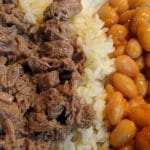 January 30, 2015 Bean Week
January 30, 2015 Bean Week
Editor's note: Readers protested vigorously when they saw that we had left Ali Baba off […] Posted in Istanbul November 6, 2018 Building Blocks
November 6, 2018 Building Blocks
The Delta de l’Ebre is a magical part of southern Catalonia’s Tarragona region. A flat […] Posted in Barcelona May 2, 2017 Jesus é Goês
May 2, 2017 Jesus é Goês
Order a plate of vindalho in one of the many Goan restaurants around Lisbon and your […] Posted in Lisbon
Published on April 02, 2013
Related stories
January 30, 2015
IstanbulEditor's note: Readers protested vigorously when they saw that we had left Ali Baba off our list, so we've put him back on the list, by popular demand. Istanbul’s eaters are spoiled by opportunities to eat great beans – and in the Turkish kitchen that means white beans, in particular, and if you’re lucky, the şeker…
November 6, 2018
BarcelonaThe Delta de l’Ebre is a magical part of southern Catalonia’s Tarragona region. A flat swampy area where the Ebro River meets the sea, the delta contains within its confines a natural park rich in fauna and flora as well as 20,500 hectares of rice fields; the ecosystem allows both to coexist in harmony. The…
May 2, 2017
LisbonOrder a plate of vindalho in one of the many Goan restaurants around Lisbon and your local friend at the table may point out that the origin of this dish is, in fact, Portuguese. Even the name can be decoded back to the Portuguese vinha d’alhos (wine and garlic), he’ll say. But let’s be honest here,…







































